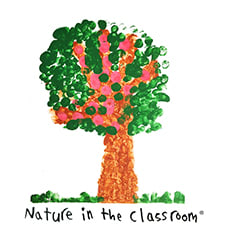Dive Brief:
- Students are increasingly becoming bored and disengaged in their math classes, with 49% of middle and high school students reporting in a RAND Corp. survey that they lost interest for about half or more of class time, and 75% reporting they lost interest for at least some class time.
- The survey report encourages educators to focus on strengthening math instruction by emphasizing the importance of learning math, balancing face-to-face and online activities, and incorporating more real-world applications in the classroom.
- “Students aren't cogs in the wheel. They need to be engaged in what they're doing to actually learn,” said Heather Schwartz, vice president and director of RAND Education and Labor. “The whole point of schooling is to create an informed citizenry and prepare them to be successful in the workplace and life. So actually engaging students in learning and helping them become critical thinkers is the whole point, not just transmission of facts into vessels.”
Dive Insight:
Teenagers get bored, said Schwartz, but it’s the prevalence of boredom and disengagement that’s concerning — especially when it's widespread across all demographics, including gender and grade level.
However, understanding students' attitudes toward math can better prepare schools and educators to tackle the issue of disengagement.
The survey found that 26% of middle schoolers and 32% of high schoolers have never considered themselves a “math person” — but it's not just students who experience these negative math feelings.
A Gallup survey from earlier this month found that 37% of U.S. adults have negative feelings toward math like confusion and boredom. The Gallup survey also noted that parents’ mindsets toward math can impact the support students receive and how students perceive the subject.
To combat this, some experts recommend reimagining what math instruction looks like by incorporating more real-world examples and collaborative components into lessons, as well as fostering a growth mindset in students.
This mindset shift can have a crucial impact on students' outcomes, because, as the RAND report states, students’ attitudes toward math — like enjoying and comprehending the subject — are strongly linked to retaining interest during math lessons.
The RAND report found that most of these positive connections to math form early on in students’ academic journey and that learners’ perception of their math competence declines as they progress from elementary to high school. This is why RAND recommends educators start fomenting these positive attitudes as early as elementary school.
“There is really an important window of time in those elementary grades to help students understand that you don't come out of a chute as a ‘math person’ or are necessarily genetically wired to be a ‘math person,’” said Schwartz, adding that the idea is to instill instead the sense that the subject is vital, interesting and a valuable skill that can be developed and improved on over time.
According to the RAND report, using active learning strategies such as problem-based learning, educational games, group discussion and structured group activities can increase students’ involvement in their learning.
The survey found that students who frequently disengage from math want fewer online math activities and more real-world content. When creating engaging math materials, the report suggests striking a balance between online and offline activities to provide engaging and individualized math instruction when possible.
Other instructional ideas from the report include providing students with a choice in how to complete math assignments, such as the order in which they answer problems, or allowing them to choose alternative formats for some projects so they can explore aspects that interest them. This can increase students’ sense of control and autonomy, the report stated, which can lead to better focus during a lesson.
The report is based on responses from 434 students in grades 5-12 as part of RAND’s newly established American Youth Panel. The broader, nationally representative panel includes young people between the ages of 12 to 21 years who regularly complete surveys about their behaviors and experiences in school.











